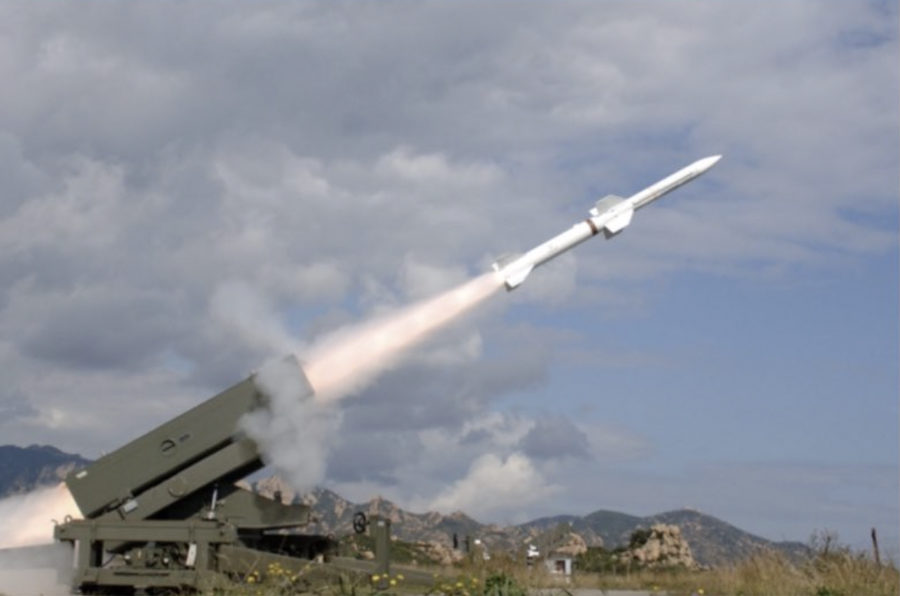Ground-based air defenses in the Russia-Ukraine war have been so effective that neither side has been able to achieve air superiority over the last 17 months—and that lesson has turned into U.S. Air Forces in Europe commander Gen. James B. Hecker’s highest priority: the improvement of NATO’s capability against integrated air defense systems (IADS), he told reporters.
In a virtual meeting of the Defense Writers Group last week, Hecker, who also serves as head of NATO’s Allied Air Command said that “counter-anti-access/area denial mission is [his] number-one priority, throughout NATO on the air side.”
Hecker added that USAFE has been “putting a lot of effort on improving our skills and using all the Allies to do that.” He didn’t go into details, but the Air Force is pursuing a number of new weapons for the Anti-IADS/Suppression of Enemy Air Defense (SEAD) mission. These include the Stand-in Attack Weapon (SiAW), as well as existing weapons like the stealthy AGM-158 Joint Air-to-Surface Standoff Missile-Extended Range (JASSM-ER). Both weapons would target enemy radars and missile batteries.
The U.K. has provided Ukraine with the Storm Shadow missile, which has comparable performance to the basic version of JASSM, and has helped Ukraine push Russian command and control stations further back from the front lines.
The U.S. has provided Ukraine with AGM-88 High-speed Anti-Radiation Missiles (HARMs) to attack Russian air defense radars, and those have been mounted on MiG-29 fighters.
The Air Force typically defines air superiority as achieving the ability to fly anywhere in the battlespace without significant risk; a condition achieved both by clearing the skies of enemy fighters and suppressing or destroying ground-based air defenses.
Neither Russia nor Ukraine have been able to do that, turning the war into what Hecker called a “World War I-like” artillery duel. In fact, Hecker said he was surprised that Russia didn’t achieve air superiority soon after the invasion began and was equally surprised when it didn’t keep trying.
“They … kind of gave up on that early on,” after losing about 75 frontline fighters, he said.
Moreover, because some of Russia’s air defense systems are operating from Russian soil, it’s more problematic for Ukraine to attack them.
As a consequence, Ukraine’s biggest need is replenishment of missiles for its air defense systems, which have been largely—but not completely—effective in knocking down Russian cruise missiles and the drones it has acquired from Iran, Hecker said.
In contrast, Hecker downplayed the importance of providing Ukraine with F-16s, saying the fighters would not be a “silver bullet” that will suddenly give Ukraine air superiority. In fact, he noted that F-16s won’t be operational in Ukraine until next year and Ukrainian pilots will not be “proficient” in the fighters for several years after that.
Instead, Hecker said his second priority is organizing NATO air forces to better counter uncrewed systems and cruise missiles. His third priority is information sharing with the allies, which he said is a “zero-cost” way to “make each other better.” He called it “a policy change, but an important one.”
After those priorities, Hecker said he’s working to implement and exercise the Agile Combat Employment model. Dating back to the end of the Cold War, allied countries used to have a well-practiced ability to service and even re-arm any NATO aircraft that landed at a NATO base, but that capability has “atrophied,” he said.
“We are working to get that back,” Hecker said. To do it, NATO will provision “20-25 bases … in strategic locations around Europe” with the means to support a wide variety of allied aircraft. He declined to specify which bases.
That won’t happen overnight, he said, but he’s aiming to have that accomplished as soon as possible.
Hecker also praised Ukraine for already applying a model like ACE and having success with it.
“We need to make sure we can do that as well,” he said. He also noted that Finland, a new NATO country, is building dual capable highways/runways, as Sweden has done for the last 60 years, to multiply the number of locations from which NATO aircraft can operate.
